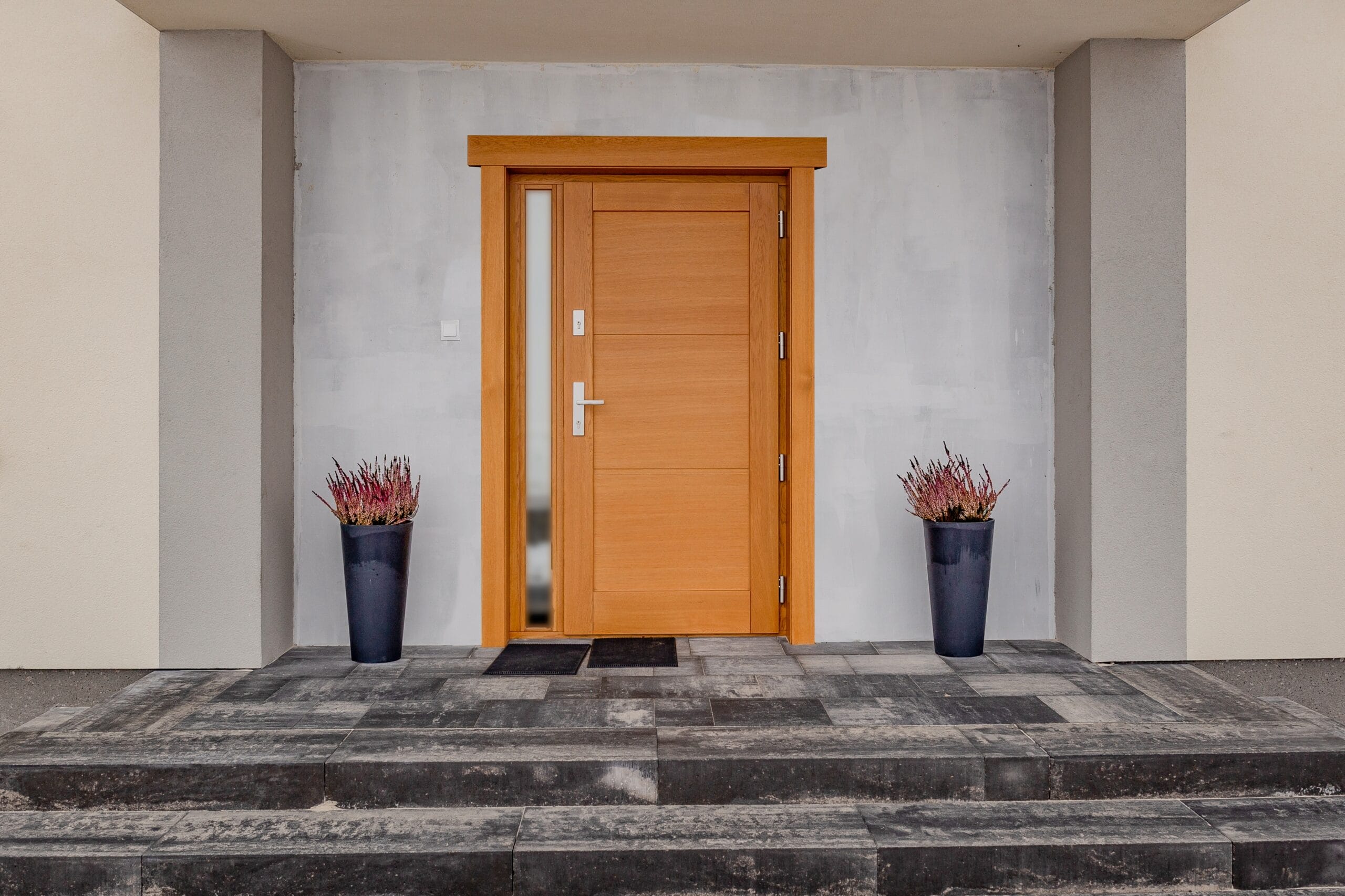Choosing the Right Front Door Matters
Choosing the right front door is a crucial decision. Not only is it the first thing your guests see, but it also plays a fundamental role in your home’s security, thermal insulation, and soundproofing. A high-quality, well-insulated front door can prevent intrusions, reduce heat loss, and maintain a comfortable indoor temperature, helping to lower heating and cooling costs.
In this article, we will explore the key aspects to consider when selecting your front door, with a focus on thermal insulation, security, materials, design, cost, installation, and maintenance. We’ll provide detailed information to help you make an informed choice that meets your needs, suits your style, and ensures a durable, long-term investment.
Security and Thermal Insulation for Your Front Door
Security is a crucial factor when choosing a front door. However, thermal insulation is just as important for keeping your home secure and energy-efficient. A poorly insulated door can let in cold air, increasing heating costs. Adding a thick curtain in front of your door is a simple yet effective way to reduce drafts and enhance thermal insulation.
Proper door insulation requires quality materials and careful installation. Reinforced doors with professional caulking around joints are particularly effective at blocking air leaks and enhancing security. Installing a thermal curtain inside can add another layer of insulation, while also helping reduce outdoor noise, improving your home’s acoustic comfort.
Different Types of Locking Systems for Enhanced Security
Three- or Five-Point Locking Systems
Three- or five-point locking systems are the most common; they provide optimal security while also helping to improve thermal insulation. By distributing locking force across the door’s full height, these systems make it much harder to break in while minimizing air leaks. These mechanisms often feature reinforced strike plates for added protection and stability. Properly fitted locks also help seal the door against drafts.
Automatic Hook Locks
An automatic hook lock engages as soon as the door is closed, offering instant protection. The hooks latch into strike plates on the frame, providing not only strong security but also enhanced sealing, critical for preventing heat loss and air infiltration. This system is particularly recommended for areas with extreme temperatures where insulation is vital.
Why Good Insulation Is Essential for Energy Efficiency
Insulating a front door isn’t just about choosing a strong and attractive model; energy efficiency is key. A properly insulated door with high-quality seals and caulking can significantly reduce energy loss. Poorly insulated doors are often major points of energy leakage, letting cold air in during winter and hot air in during summer.
Adding a thermal curtain in front of your exterior-facing door creates an extra barrier against temperature variations. Professional caulking around door joints is another essential step to prevent air leaks. Those seeking even higher performance should consider a solid wood door with a strong frame for natural insulation.
Conclusion: Choosing the Best Insulated Front Door
Choosing the best front door for your home involves more than aesthetics and security. Insulation is a vital factor in ensuring comfort and energy efficiency. Whether by selecting the right material, such as wood, or adding features like a thermal curtain or professional caulking, every detail matters.
For additional advice and personalized recommendations, feel free to contact our team at Fenomax.
FAQ – Security and Insulation of Front Doors
How can I properly insulate my front door against the cold?
Install weatherstripping, a door sweep, or a thermal curtain. If your door is old, replacing it with a better-insulated model may be more effective.
What is the most insulating material for a front door?
PVC offers the best thermal insulation at a good price. Aluminum doors with thermal break systems are also efficient, and wood remains a strong natural insulator.
How to improve the soundproofing of a front door?
Choose solid wood, steel, or aluminum doors with an insulating core. Adding seals, a soundproof door sweep, or acoustic glass inserts improves sound insulation.
What are the signs that a front door is poorly insulated?
Feeling cold near the door, drafts, condensation, or higher energy bills may indicate poor insulation. Testing with a sheet of paper can reveal air leaks.
How should I maintain my front door to preserve its performance?
Regularly clean and inspect weatherstripping, the lock, and the exterior finish. Annual maintenance helps maintain insulation and extend your door’s lifespan.
